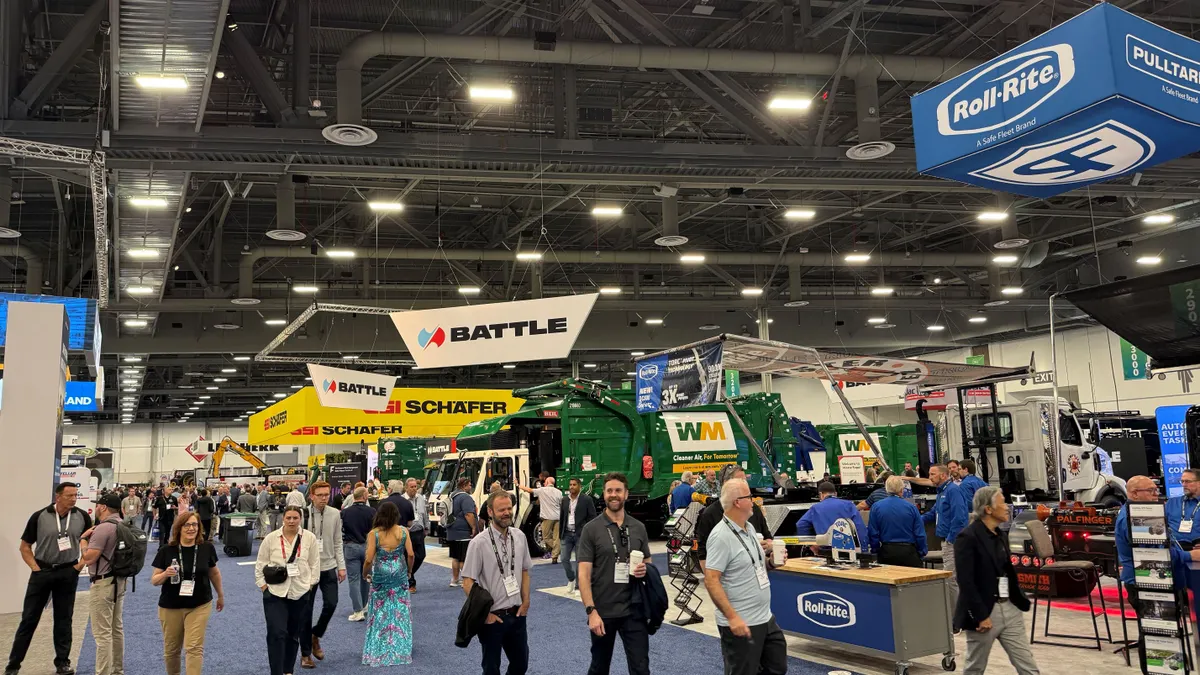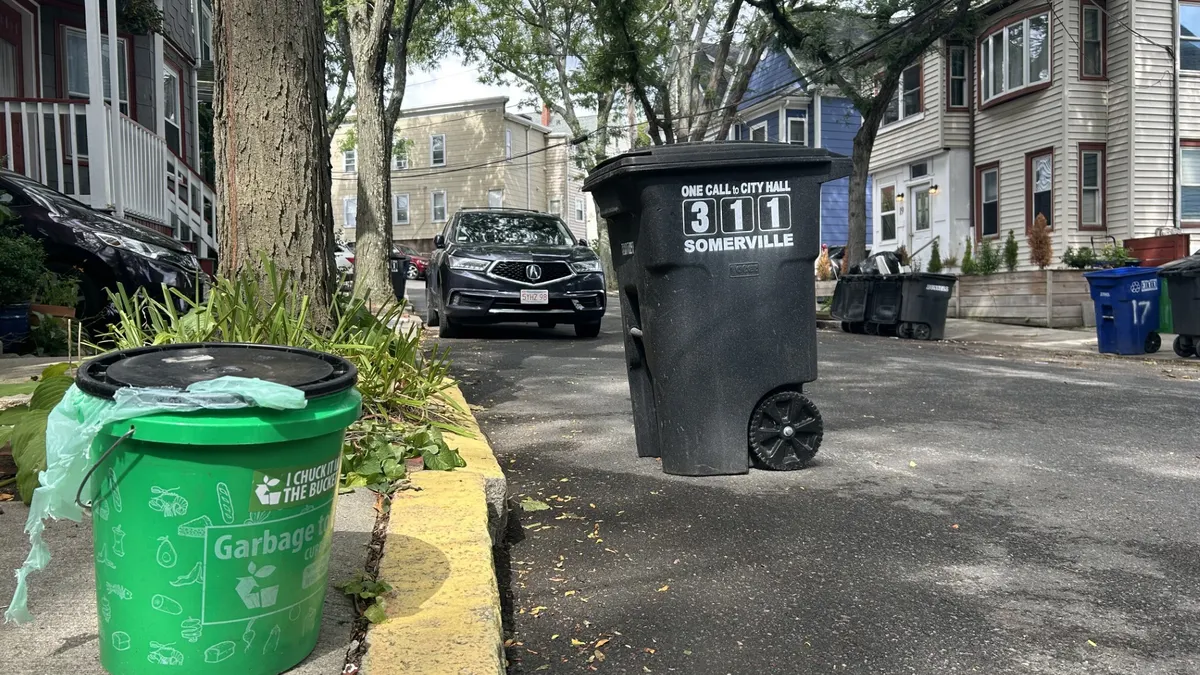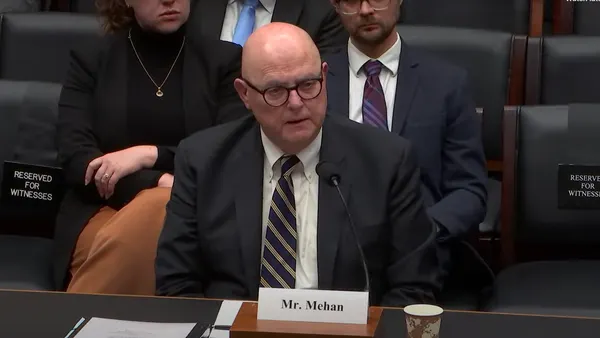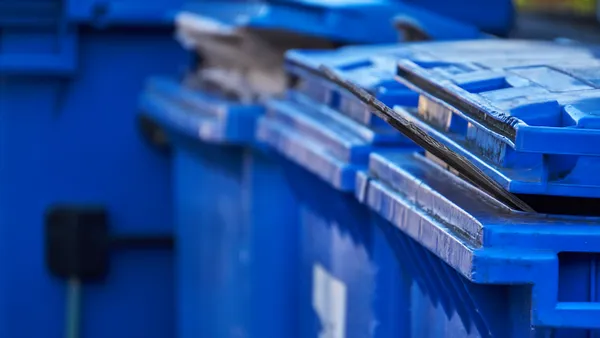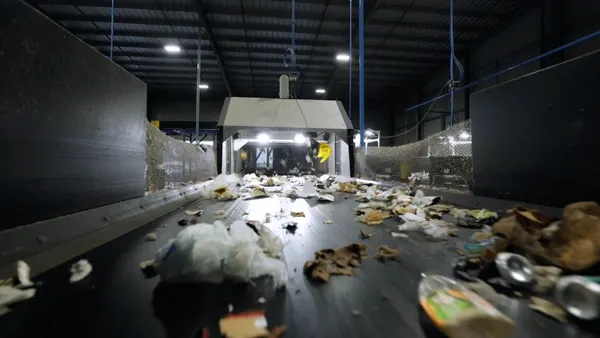New York's Center for Architecture is debuting a new exhibit on June 14, "Designing Waste: Strategies for a Zero Waste City," that literally puts some of the most utilitarian collection tools on a pedestal.
"We walk by these bins and bags and toters every single day," curator Andrew Blum told Waste Dive. "My sense is that this is the moment to stop and think about what they do and how they can do it better."
The exhibit will feature a working waste station as part of AIA New York's new "Zero Waste Challenge," vertical baler technology, an interactive waste calculator and videos of facility staff in their daily routines, among other pieces.
This isn't the first time New York's waste systems have gotten the gallery treatment. Exhibits on "maintenance art" within the Department of Sanitation (DSNY) and the broader history of city waste are some of the more recent examples.
Yet from an architectural standpoint, this exhibit is seen as a first, and one that's increasingly relevant as New York tries to envision a "zero waste" future.
"There has been a lot said and a lot written about New York City’s waste system more broadly, but less noticed is the hidden waste system of how our waste gets to the curb or to the dumpster," said Blum.
As outlined in the many events and discussions surrounding last year's launch of the Zero Waste Design Guidelines that inspired the exhibit, the possibilities are vast for what could be done if architects make this a higher priority.
That could include anything from relatively simple features — such as making more accessible paths to loading docks and curbs — to building better storage for organics and other material streams, or even installing pneumatic tubes.
Architect Clare Miflin, who has been one of the driving forces behind these guidelines, told Waste Dive that she continues to travel around the city educating firms about this work. DSNY has been helping fund some of this education through AIA NY, and other agencies have also been receptive, but the next step will be tangible action to make the guidelines part of future zoning codes.
"We need to have a multi-agency task force moving the guidelines," said Miflin, adding that "tapping into city buildings might be a way forward" as an interim step of local government leading by example in its own projects.
In the meantime, some solutions such as shared neighborhood compactors or vertical balers in buildings can also be retrofitted into existing infrastructure.
For example, the vertical baler technology being featured in this exhibit from Nanoia Recycling Equipment is continuing to gain traction with building staff throughout the tri-state area.
It's seen as a way of freeing up the tight spaces that many of them work in, as well as freeing up hours that were previously spent hauling loose bags and boxes.
"At first they were concerned about it because it's a mechanized system," said David Salomon, a business development consultant at Nanoia, of the unions he's worked with so far. "What they have learned in effect is that they can re-purpose their staff."
Salomon said interest has also ticked up following greater scrutiny around material quality due to commodity markets and that "we have to do everything we can to separate and get a clean product out there."
While architects, planners and the real estate world may be this exhibit's primary audience for the initial launch — the head of waste and public cleanliness for Paris is even flying over to speak — the general public is encouraged to attend between now and September 1 as well.
"Many more people are closer to decision making positions in their homes and buildings than they are at a citywide scale. By reducing the scale, we’re increasing people’s agency," said Blum. "If it’s easier to move around, the hope is that we will divert more of it."



